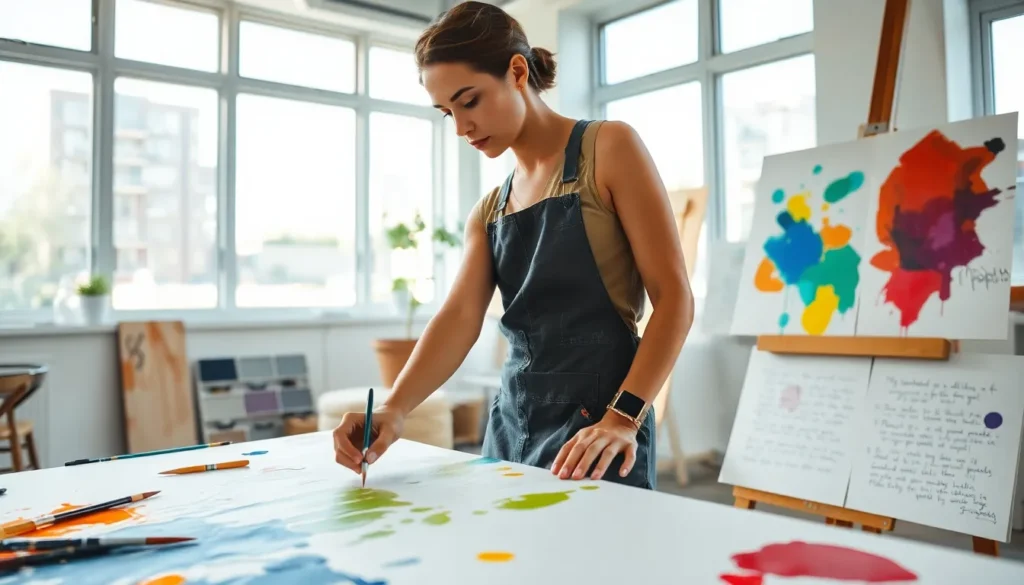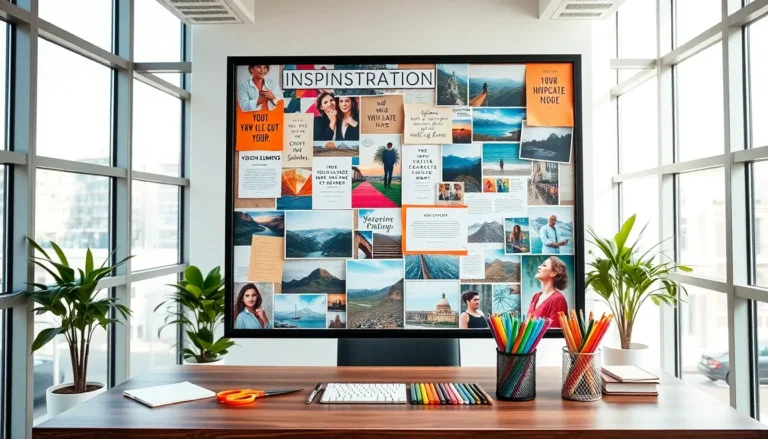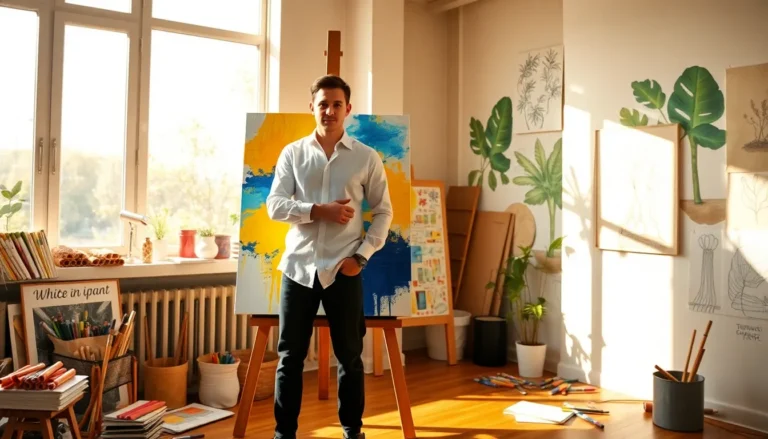Table of Contents
ToggleEver found yourself staring blankly at a canvas, unsure of what to create next? Trust me, you’re not alone. Drawing inspiration can sometimes feel like trying to find a needle in a haystack. It’s elusive, frustrating, and just when you think you’ve got a grasp on it, it slips away. Luckily, inspiration is everywhere, from the bustling streets to your grandmother’s old photo albums. The trick is knowing where to look. With a bit of guidance, you’ll soon be equipped with a toolkit of ideas to spark your creativity and ignite your artistic passion. Let’s jump into the world of inspiration and uncover some golden nuggets that can fuel your next masterpiece.
Understanding Inspiration in Art

Inspiration in art is like that elusive friend who never seems to be around when you need them. But let’s be real: it’s not just about waiting for a muse to strike you with a magical idea. Inspiration can be understood and cultivated. It’s essential to know that it can stem from various emotional experiences, visual stimuli, or even random thoughts that dance in your head. Art transcends mere creation: it captures stories, dreams, and moments in time. Recognizing the trigger of your inspiration can help in harnessing it effectively.
Sources of Inspiration
Inspiration can burst forth from the most unexpected of places. Here’s a deeper exploration of some of the common sources that many artists draw from.
Nature and the Great Outdoors
Nature has been a muse for artists across generations. The vibrant colors of autumn leaves, the serene blue of the ocean, or the intricate patterns found in a single flower petal can provide a wellspring of creative ideas. Stepping outside, even for a short walk, can lead to a fresh perspective or spark ideas that were previously hidden.
Art and Other Artists
Nothing beats the magic of viewing work by others. Museums, galleries, and online platforms showcase the variety of artistic expressions. Studying different styles and techniques can inspire new approaches to one’s own creations. Sometimes, the simplest observation of how another artist handles color or texture can send you spiraling into a flurry of innovative thought.
Personal Experiences and Memories
Personal stories shape an artist’s voice. Reflection on significant experiences or cherished memories can evoke deep emotional responses, fueling powerful pieces of art. Whether it’s the smell of grandmother’s baking or a childhood adventure, these elements can reinvigorate one’s creativity like nothing else.
Techniques for Finding Inspiration
While inspiration might feel spontaneous, there are practical techniques to coax it out of hiding.
Creative Prompts and Challenges
Participating in creative prompts or challenges can push artists outside their comfort zones. Monthly or weekly themes encourage experimentation and can yield unexpected perspectives and ideas. Sometimes, it takes a simple challenge to get the creative juices flowing.
Collaborative Projects
Teamwork can unlock shared creativity in an exciting new way. Collaborating with fellow artists can merge ideas and approaches, creating something entirely unique. Sharing thoughts and bouncing ideas off each other can breathe fresh life into stale projects.
Exploring New Mediums
Trying new mediums can act as a catalyst for creativity.
Adapting Techniques from Different Cultures
Exploring art forms from various cultures brings in novel techniques and philosophies. Whether it’s Japanese ink painting or African beadwork, incorporating such techniques can enrich an artist’s toolbox and broaden their perspective.
Incorporating Technology in Art Creation
With technology evolving rapidly, the possibilities are endless. Art apps and digital tools open up avenues to blend traditional methods with modern innovations, allowing for exciting experiments that can spark new ideas.
Building a Habit of Observation
Inspiration often arises from keen observation and mindfulness.
Maintaining a Sketchbook
Keeping a sketchbook can serve as a personal archive of ideas and observations. Doodling, jotting down thoughts, and sketching surroundings build a habit of observation that can ignite inspiration later. Artists often find their next big idea nestled among the pages filled with casual sketches.
Mindfulness and Creative Flow
Practicing mindfulness opens the mind up for spontaneous ideas. By centering oneself and engaging in exercises like meditation, an artist can enhance their creative flow. Embracing the present brings clarity, allowing inspiration to surface without the weight of distractions.




